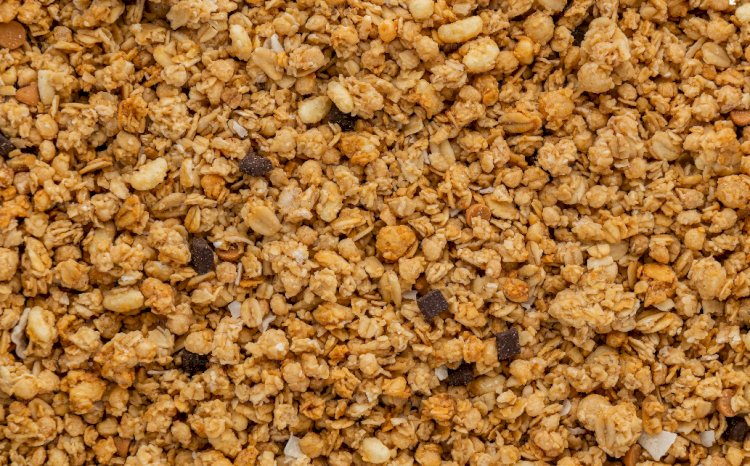Millets - The Indian Superfoods
United Nations (UN) has declared the year 2023 as International Year of Millets 2023 (IYM). India and many countries, organizations are celebrating and promoting Millets

According to FAO “Millets encompass a diverse group of cereals including Finger (Ragi), Pearl (Bajra), Little (Kutki), Foxtail (Kangni), Proso, Barnyard, Kodo, Browntop, and Guinea millets, as well as fonio, sorghum (or great millet) and teff. They are an important source of nourishment for millions of people in sub-Saharan Africa and Asia. They are deeply rooted in Indigenous Peoples’ culture and traditions and help guarantee food security in areas where they are culturally relevant.”
“Millets are incredible ancestral crops with high nutritional value. Millets can play an important role and contribute to our collective efforts to empower smallholder farmers, achieve sustainable development, eliminate hunger, adapt to climate change, promote biodiversity, and transform agrifood systems,” FAO Director-General QU Dongyu
Millets, cultivated in arid and semi-arid regions, are nutrient-dense small-seed cereals known as Nutri-cereals. Their cultivation requires less water and inputs while showcasing resilience to climate conditions. These superfoods pack a nutritional punch, containing carbohydrates, protein, dietary fiber, healthy fats, and an abundance of minerals like calcium, potassium, iron, and zinc, along with various B vitamins. Rich in dietary fiber, millets aid digestion, prevent constipation, and being gluten-free, they're beneficial for individuals with celiac disease. Additionally, millets are high in antioxidants, guarding cells against free radicals, and their low glycemic index supports diabetes management. Recent studies indicate their potential in reducing the risk of cardiovascular diseases.
India is a significant producer of nine traditional millets, including Sorghum, Pearl Millet, Finger Millet, Foxtail Millet, and others. With a production of around 173 lakh tonnes, India contributes 80% of Asia's and 20% of the global millet production, as per FAO Stat 2021. It stands among the top 5 millet exporters globally, experiencing a consistent 3% annual growth in exports over the last 5 years. Millets in India not only offer nutritional value but also ensure food and fodder security for dry land agricultural communities. These crops are vital for small farmers due to their resilience and adaptability to harsh, hot, and drought-prone environments, making them a secure option in challenging conditions.
Millets, traditional Indian superfoods, offer numerous health benefits:
Nutrient-Rich: Millets, like finger millet (ragi), are rich in nutrients such as Calcium, Iron, Magnesium, and Fiber. These nutrients are essential for bone health, energy production, and maintaining healthy digestion.
Gluten-Free: Millets are naturally gluten-free, making them an excellent alternative for people with gluten sensitivities or celiac disease.
Blood Sugar Regulation: Millets have a low glycemic index, which means they release sugar into the bloodstream slowly. This property helps regulate blood sugar levels and may reduce the risk of type 2 diabetes.
Heart Health: The high fiber content in millets, along with compounds like magnesium, may contribute to heart health by reducing cholesterol levels and blood pressure.
Weight Management: Millets are filling due to their fiber content, helping to keep you satiated for longer periods and aiding in weight management by reducing overeating.
Improved Digestion: The fiber in millets supports healthy digestion, prevents constipation, and promotes a healthy gut microbiome, supporting overall digestive health.
Rich in Antioxidants: Some millets, like finger millet (ragi), contain antioxidants that combat oxidative stress, protecting cells from damage caused by free radicals.
Supports Skin and Hair Health: The nutrients present in millets, such as iron and amino acids, contribute to healthy skin and hair growth.
Versatility: Millets can be used in various dishes, from porridges and flatbreads to savory dishes and baked goods, making them a versatile ingredient for diverse culinary options.
Sustainable Crop: Millets are resilient crops that require less water and can grow in diverse environmental conditions, making them environmentally friendly and sustainable.
Odisha has done remarkable work on Millets through its Odisha Millet Mission and benefited more than 2.5 Lakh farmers with value-chain and convergence interventions in last four years.
Greater millet production can support the livelihoods of smallholder farmers and can provide decent jobs for women and youth. The revenue created can boost economic growth. With the possibility of a health cereal alternative with millets, the risks associated with production shocks can be mitigated.
References:
https://milletsodisha.com/about-program
What's Your Reaction?



















